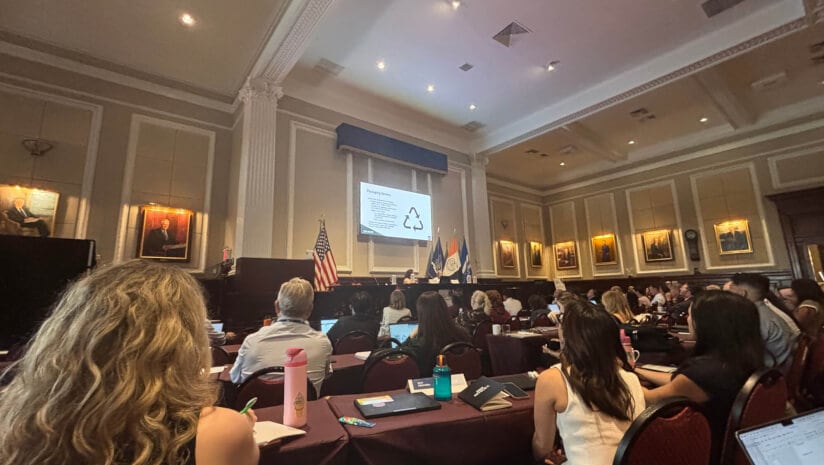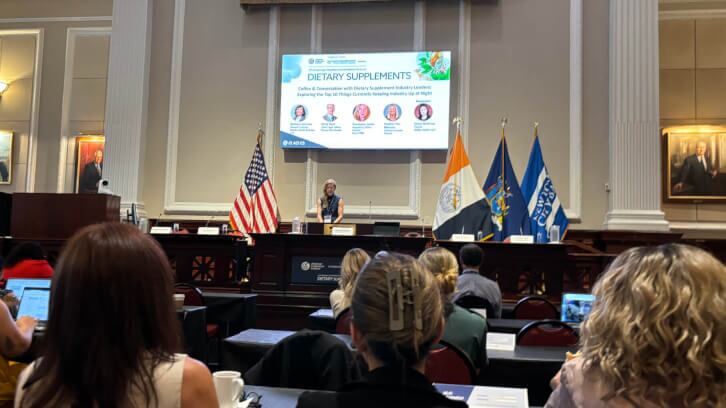Lawyers, regulators and industry stakeholders convened last week at the New York City Bar Association for the 13th Annual ACI-CRN Legal, Regulatory and Compliance Forum on Dietary Supplements to discuss compliance strategies in a broader regulatory landscape that is perhaps overwhelmed by movement and underwhelmed by nuance.
While many familiar issues remained on the agenda—drug preclusion, the new dietary ingredient notification process, government inspection frequency and enforcement, class action lawsuits and the divide between good and bad actors—there was a prevailing sense that the industry is still waiting for Godot despite high hopes that the MAHA movement would signal real momentum.
“Many expected a golden age for dietary supplements, and that hasn’t really come to fruition yet,” said Michael Meirovitz, senior director of government relations at the Council for Responsible Nutrition (CRN). “We’re still kind of in an uncertain period where there are going to be risks and opportunities.”
‘Casting a wider net to see around the corner’
Meirovitz was one of five participants on an opening regulatory panel that examined compliance challenges amid evolving FDA oversight and uncertainties surrounding state action, generally recognized as safe (GRAS) status, labeling and marketing practices and tariffs—issues that were further addressed in the remainder of the program.
“It’s either going to be the best of times or the worst of times, but no one’s really quite sure where we stand,” said panel moderator Bob Durkin, partner and co-chair of the regulatory group at Amin Wasserman Gurnani.
Much of that uncertainty stems from the fact that, in its first six months, the second Trump administration has prioritized food policy but remained largely silent on supplements. Still, regulators speaking at the conference said industry may be able to glean intent by looking at the broader regulatory agenda.
“So far there hasn’t been a lot of sole attention on supplements, but I think I would go back to the moves that we are seeing—the moves that have been announced for the broader food supply that also impact dietary supplements,” said Cara Welch, PhD, director of the Office of Dietary Supplement Programs (ODSP) at the Food and Drug Administration (FDA). She noted directives to examine the self-GRAS pathway, food dyes and post-market assessment as examples.
“I think it’s important for FDA to hear from our supplement stakeholders as we move forward to make sure that we can understand the full impact of these changes,” she added, stressing the importance of industry input in an era of federal deregulation and decentralization. “I believe there is an open comment period right now at HHS until mid-July, so now is the time where we really want to hear outside-the-box thinking about ways that we can streamline oversight, streamline regulatory activities.”
This might include pinpointing regulations or policy guidance that could be eliminated to satisfy the new 10-to-1 deregulation mandate, potentially clearing the way for the next installment of a bundled New Dietary Ingredient (NDI) guidance on identity and safety.
Christine Delorme, attorney in the Division of Advertising Practices at the Federal Trade Commission, noted that although the current chairman has not made any specific statements about dietary supplements to her knowledge, industry can look to school lunch food bans, the Opioid Addiction Recovery Fraud Prevention Act, the prenatal bill in California and ‘healthy-again’ initiatives at the state level for indication.
“You really have to cast a wider net if you want to see around the corner,” she said.
While Delorme confirmed that the commission has not issued penalties to the nearly 700 companies it put on notice in 2023 over deceptive marketing claims, she did draw attention to the final ‘Click-to-Cancel’ rule that goes into effect July 14. It involves a major expansion of liability and carries potential civil penalties up to $53,088 per violation.
Staying agile to keep up with fast-moving states
Even as federal agencies pursue broad deregulation, states are stepping in with a patchwork of new requirements spanning everything from packaging and data privacy to marketing to minors and “Made in the USA” labeling claims.
Throughout the sessions, lawyers talked preparations and procedures for mitigating associated risks and ensuring adherence to new or amended compliance requirements. The growing threat of compounded state legislation featured across many of the sessions.
“I think what you’re going to see is the states are going to move faster,” said Christine Burdick-Bell, executive vice president and general counsel of legal affairs at Pharmavite.
“We’ve always had progressive states—take California or New York—passing protectionist laws. What you’re seeing is now the other side of the coin—states that are very interested in MAHA, hearing what the federal government is saying and taking on the same fight. The states move faster. I think this may be intentional.”
The latest state legislation includes several different bills that would create a patchwork of Generally Recognized as Safe (GRAS) requirements, some of which fail to recognize the concept of dietary ingredient enshrined in the Dietary Supplement Health and Education Act (DSHEA) of 1994.
“States are over-regulating, taking an almost pre-DSHEA position relative to dietary ingredients rather than appreciating what DSHEA accomplished in defining and regulating a dietary ingredient,” Durkin said.
In this type of regulatory landscape, Burdick-Bell suggested companies could start by assessing which self-GRAS ingredients in their portfolios are subject to state bills, evaluate the level of risk, clarify potential implications and prioritize necessary changes.
Other speakers emphasized the importance of staying off the plaintiff bar’s radar, closely monitoring enforcement trends, keeping up with AI, having contingency plans and cross-functional teams in place, and maintaining thorough documentation, training and monitoring across areas.



